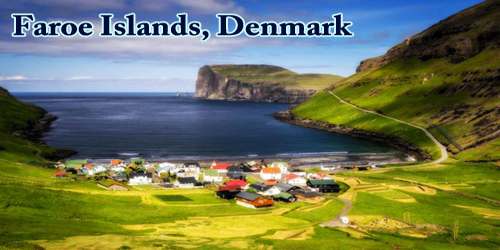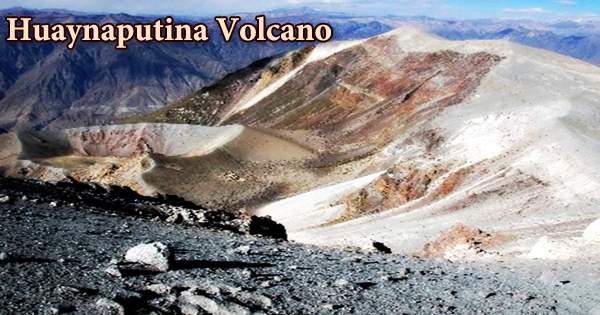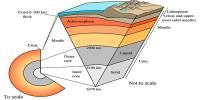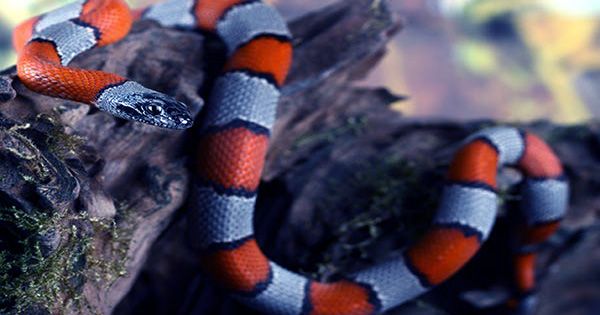The Faroe Islands (/ˈfɛəroʊ/; Faroese: Føroyar, pronounced (ˈfœɹjaɹ); Danish: Færøerne, pronounced (ˈfɛɐ̯ˌøˀɐnə)), or the Faeroe Islands are a group of 18 islands in the North Atlantic located somewhere between Scandinavia and Iceland, just north of Scotland. It’s a remote destination but well worth it, as it was voted one of the top destinations by National Geographic in 2015.
With an area of 1,393 km², the Faroe Islands are slightly larger than half the size of Luxemburg, or slightly smaller than one-third of Rhode Island. It is an autonomous territory within the Kingdom of Denmark. The islands have a total area of about 1,400 square kilometres (540 sq mi) with a population of 52,110 as of January 2020, spoken languages are Faroese Danish.
The terrain is rugged; the climate is the subpolar oceanic climate (Cfc) windy, wet, cloudy, and cool. Temperatures average above freezing throughout the year because of the Gulf Stream. As a result of the moderation and the northerly latitude, summers normally hover around 12 °C (54 °F). Average temperatures are 5 °C (41 °F) in winter. The northerly latitude location also results in perpetual civil twilight during summer nights and very short winter days.
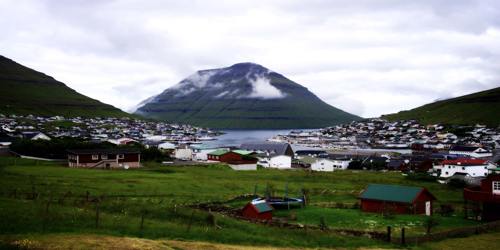
Composed of volcanic rocks covered by a thin layer of moraine or peat soil, the islands are high and rugged with perpendicular cliffs the highest at Mount Slaettara (Slaettaratindur; 2,894 feet (882 meters)) on Eystur Island and flat summits separated by narrow ravines. The coasts are deeply indented with fjords, and the narrow passages between islands are agitated by strong tidal currents.
The climate is oceanic and mild, with little variation in temperature and frequent fog and rain; annual precipitation totals 60 inches (1,600 mm). The warm North Atlantic Current keeps the harbors free of ice. Natural vegetation is moss, grass, and mountain bog. The islands are naturally treeless because of the cool summers, strong westerly winds, and frequent gales, but some hardy trees have been planted in sheltered plantations. There are no toads, reptiles, or indigenous land mammals; hares, rats, and mice came on ships. Seabirds are numerous and were in earlier times economically important the puffin as food and the eider for feathers.
The gems of the islands are a few “unpronounceable” villages – 1) Mykines, which is located on an island by the same name, is reachable via a ferry or a helicopter. 2) Saksun, a 40-minute drive from the capital city. 3) Gjogv, a remote village on a neighboring island surrounded by scenic roads and fjords in every direction!
In Faroese, the name appears as Føroyar. In Danish, the name Færøerne contains the same elements, though øerne is the definite plural of ø (island). In English, it may be seen as redundant to say the Faroe Islands, since the oe comes from an element meaning “island”. This is seen in the BBC Shipping Forecast, where the waters around the islands are called Faeroes. The name is also sometimes spelled “Faeroe”.
History of the Faroe Islands –
The Faroese are of Scandinavian origin; many are descendants of Norwegian Vikings who colonized the islands about 800 CE. About a fourth of the population lives in Tórshavn, the remainder live in small settlements, almost all of which are on the coasts. The official languages are Faroese most closely related to Icelandic and Danish. Most islanders are Lutherans belonging to the Evangelical Lutheran Church of Denmark. The population tripled between 1801 and 1901 and has more than doubled since then.
Archaeological evidence shows settlers living on the Faroe Islands in two successive periods before the Norse arrived, the first between 300 and 600 and the second between 600 and 800. Scientists from the University of Aberdeen have also found early cereal pollen from domesticated plants, which further suggests people may have lived on the islands before the Vikings arrived. Archaeologist Mike Church noted that Dicuil mentioned what may have been the Faroes. He also suggested that the people living there might have been from Ireland, Scotland, or Scandinavia, possibly with groups from all three areas settling there.
A Latin account of a voyage made by Brendan, an Irish monastic saint who lived around 484–578, includes a description of insulae (islands) resembling the Faroe Islands. This association, however, is far from conclusive in its description.
Viking age Norwegian kings long aspired to gain control over the Faroe Islands, but for many years the Faroese managed to fight them off. However, by the latter half of the 12th century, the Faroe Islands eventually became firmly attached to the Kingdom of Norway.
The Faroe Islands joined Norway into the dual monarchy with Denmark in the late 14th century. When this union was succeeded by a Norwegian-Swedish union in 1814 the former Norwegian territory of the Faroe Islands remained under the sovereignty of the Kingdom of Denmark. Due to, among other factors, remoteness vis-à-vis both Norway and Denmark, the Faroes Islands always maintained a special jurisdiction along with their distinct language and culture, guarded by the ancient Løgting.
The royal trade monopoly long stood in the way of development. When it was abolished in 1856 an export-oriented commercial fishing industry rapidly developed in the Faroe Islands kickstarting the development of a modern market economy and population growth.
In the first year of World War II, on 12th April 1940, British troops occupied the Faroe Islands. Nazi Germany had invaded Denmark and commenced the invasion of Norway on 9 April 1940 under Operation Weserübung. In 1942–1943 the British Royal Engineers, under the leadership of Lt. Col. William Law MC, built the only airport in the Faroe Islands, Vágar Airport. Control of the islands reverted to Denmark following the war, but Danish rule had been undermined, and Iceland’s independence served as a precedent for many Faroese.
The special constitutional status, combined with a growing export-oriented economy and a cultural national awakening by the late 19th century, fuelled a Faroese nation-building process and the establishment of political autonomy. Since adopting the Home Rule agreement of 1948 the Faroe Islands have had extensive self-government. The University of the Faroe Islands in Tórshavn was founded in 1965.
Poor fiscal discipline in the 1980s, coupled with the collapse of the Faroese fishing industry because of overfishing, resulted in an economic crash in the early 1990s that required Danish intervention. The islands rebounded, though, to face the 21st century with renewed vigor, buoyed by the economic promise of offshore oil drilling and a growing independence movement.
Geography and Climate –
The Faroe Islands are an island group consisting of 18 major islands (and a total of 779 islands, islets, and skerries) about 655 kilometers (407 mi) off the coast of Northern Europe, between the Norwegian Sea and the North Atlantic Ocean, about halfway between Iceland and Norway, the closest neighbors being the Northern Isles and the Outer Hebrides of Scotland. Its coordinates are 62°00′N 06°47′W.
Through the centuries, the Faroese have defied the harsh nature and living conditions. Enduring today is a nation in which the living standard is one of the highest in the world. A highly industrial economy mainly based on fisheries and aquaculture continues to flourish, while a Nordic welfare model ensures everyone the opportunity to explore his or her own potential. Faroese maritime expertise is widely renowned and the Faroe Islands export seafood to all six continents.
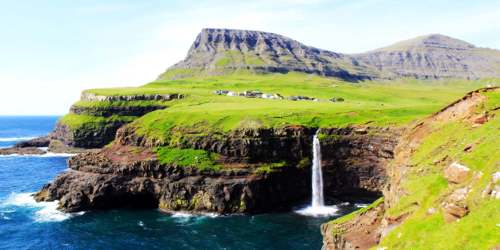
The islands cover an area of 1,399 square kilometers (540 sq. mi) and have small lakes and rivers, but no major ones. There are 1,117 kilometers (694 mi) of coastline. The only significant uninhabited island is Lítla Dímun. The islands are rugged and rocky with some low peaks; the coasts are mostly cliffs. The highest point is Slættaratindur in northern Eysturoy, 882 meters (2,894 ft) above sea level.
The overall character of the climate of the islands is influenced by the strong warming influence of the Atlantic Ocean, which produces the North Atlantic Current. This, together with the remoteness of any source of landmass-induced warm or cold airflows, ensures that winters are mild (mean temperature 3.0 to 4.0 °C or 37 to 39 °F) while summers are cool (mean temperature 9.5 to 10.5 °C or 49 to 51 °F).
Economy –
Since 1900 the economy of the islands has changed from agricultural (primarily sheep raising) to one based on fishing and related industries, especially the export of frozen and dried cod. Supplements to fishing include fowling and sheep raising wool is still used in a small, home-based spinning and knitting industry. Little of the land is cultivated; the main crop is grass for sheep. Fuels, basic manufactures, and transport equipment are the major imports. The main harbor is at Tórshavn, and there is an airport on Vágar. There are regular shipping services with Denmark, Iceland, and, in summer, the Shetland Islands. In the middle of the 1990s, the islands suffered a severe economic crisis, which generated a substantial emigration to Denmark. After a recovery in 1997–98, many returned.
Today fisheries and aquaculture are the basis for the production and export of high-quality Faroese fish products, which constitute 95 percent of the total income of exported goods. Diversification of the economy and the development of a welfare society have led to a variety of working opportunities in the modern Faroese society.
With economic wealth, the Faroese have developed a welfare society much along the lines of the typical Scandinavian welfare state model, e.g. with free education and healthcare for all.
Flora & Fauna –
The natural vegetation of the Faroe Islands is dominated by arctic-alpine plants, wildflowers, grasses, moss, and lichen. Most of the lowland area is grassland and some is heath, dominated by shrubby heathers, mainly Calluna vulgaris. Among the herbaceous flora that occurs in the Faroe Islands is the cosmopolitan marsh thistle, Cirsium palustre. Although there are no trees native to the Faroe Islands, limited species were able to be successfully introduced to the region, including the black cottonwood, also known as the California poplar (Populus trichocarpa).
Only a few species of wildland mammals are found in the Faroe Islands today, all introduced by humans. Three species are thriving on the islands today: mountain hare (Lepus timidus), brown rat (Rattus norvegicus), and the house mouse (Mus musculus). Apart from these, there is a local domestic sheep breed, the Faroe sheep (depicted on the coat of arms), and there once was a variety of feral sheep, which survived on Lítla Dímun until the mid-nineteenth century.
The bird fauna of the Faroe Islands is dominated by seabirds and birds attracted to open land such as heather, probably because of the lack of woodland and other suitable habitats. Many species have developed special Faroese sub-species: common eider, Common starling, Eurasian wren, common murre, and black guillemot. The pied raven, a color morph of the North Atlantic subspecies of the common raven, was endemic to the Faroe Islands, but now has become extinct.
The domestic animals of the Faroe Islands are a result of 1,200 years of isolated breeding. As a result, many of the islands’ domestic animals are found nowhere else in the world. Faroese domestic breeds include Faroe pony, Faroe cow, Faroe sheep, Faroese goose, and Faroese duck.
Government and Society –
The islands are a self-governing region within the Danish state and send two representatives (elected every four years) to the Folketing, the Danish legislature. The Faroe Islands Parliament (Lagting) has 32 elected members, who in turn elect an executive body (Landsstyre) headed by a chairman. Foreign policy, defense, and the monetary and judicial systems are overseen by the Folketing. A commissioner represents Denmark in the islands. Education is based on the Danish system. The islands have good medical services. For a long time, a substantial minority has sought full independence from Denmark, and in 1999 the Landsstyre entered negotiations with the Danish government about conditions for full independence. An important point in the talks was the yearly payment of one billion Danish krone from Denmark as half the export earnings.
Culture and Tourism –
The culture of the Faroe Islands has its roots in the Nordic culture. The Faroe Islands were long isolated from the main cultural phases and movements that swept across parts of Europe. This means that they have maintained a great part of their traditional culture. The language spoken is Faroese, which is one of three insular North Germanic languages descended from the Old Norse language spoken in Scandinavia in the Viking Age, the others being Icelandic and the extinct Norn, which is thought to have been mutually intelligible with Faroese. Until the 15th century, Faroese had a similar orthography to Icelandic and Norwegian, but after the Reformation in 1538, the ruling Norwegians outlawed its use in schools, churches, and official documents. Although a rich spoken tradition survived, for 300 years the language was not written down. This means that all poems and stories were handed down orally. These works were split into the following divisions: sagnir (historical), ævintýr (stories) and kvæði (ballads), often set to music and the medieval chain dance. These were eventually written down in the 19th century.
Positioned strategically between Europe and North America, the Faroe Islands are only a couple of hours’ flight from the metropolitan centers in Northern Europe. Upon arrival, the scenery renders visitors a ravishing natural experience in a society with advanced infrastructure and digital networks.
Centuries of relative isolation have resulted in the preservation of ancient traditions that to this day shape life in the Faroe Islands. The unique mixture of traditional and modern culture characterizes the Faroese society, constituting a strong sense of local community and an active outlook as a globalized Nordic nation.
The islands are connected with a system of bridges and sub-sea tunnels, and driving is fairly easy, but watch out for the sheep. In order to reach the more remote islands ferries are being used.
Information Sources:
